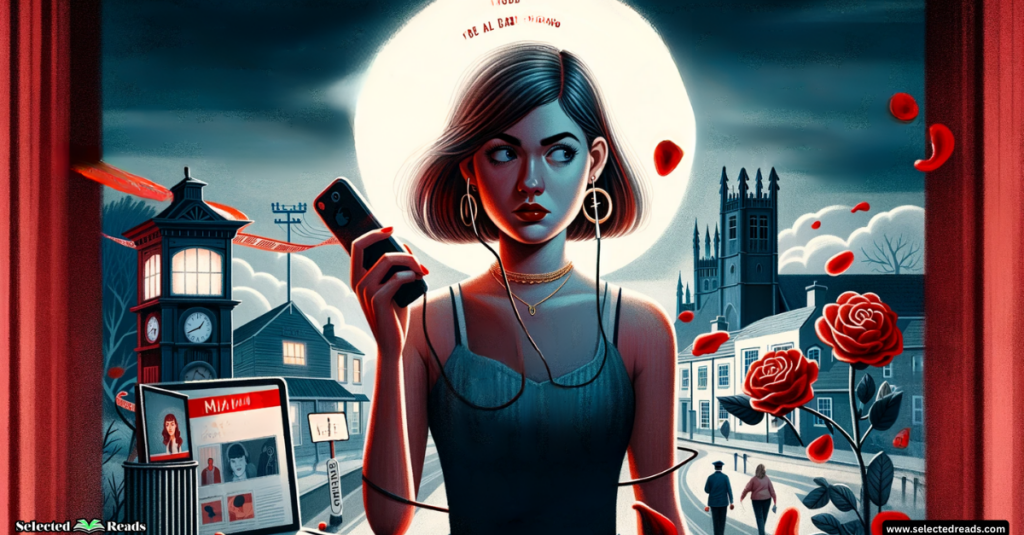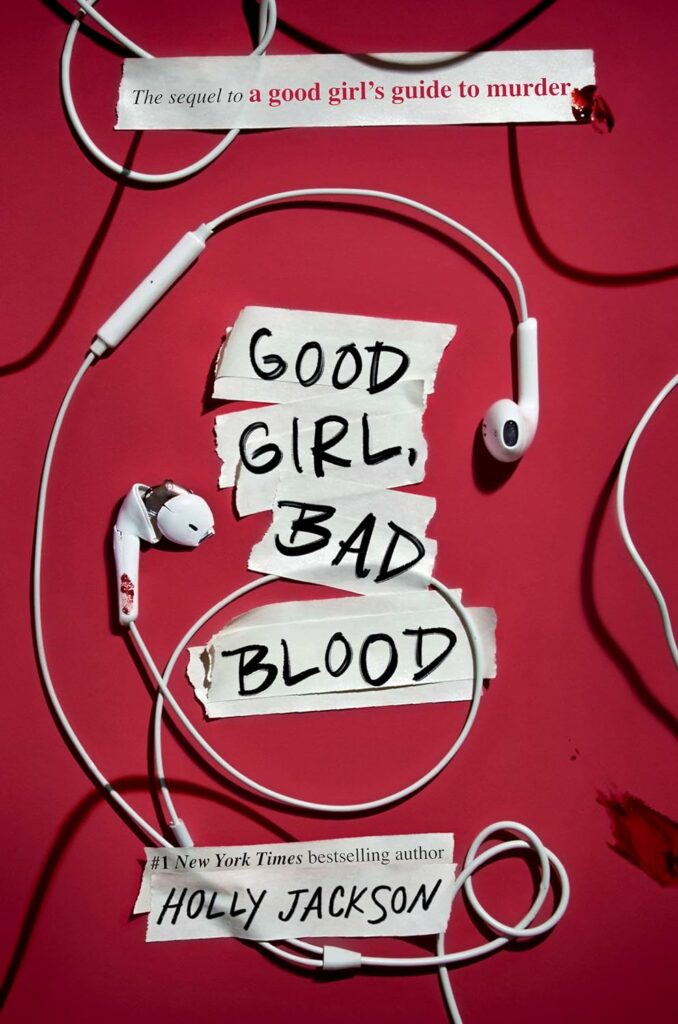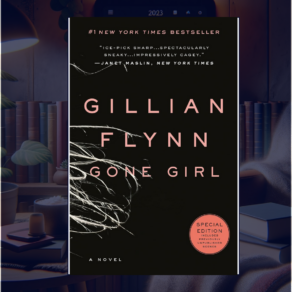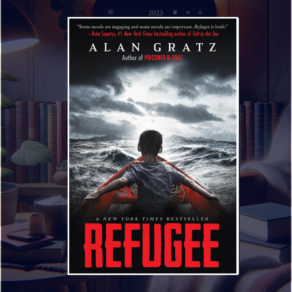In this exploration, we delve into Holly Jackson’s enthralling sequel, “Good Girl, Bad Blood,” a follow-up to her acclaimed debut, “A Good Girl’s Guide to Murder.” This young adult mystery novel, released on March 2, 2021, has garnered significant attention and praise. It’s a tale that blends suspense, emotion, and the complexities of small-town life.
Our journey through this captivating novel will encompass a comprehensive summary, an in-depth look at the key characters who bring the story to life, and a selection of poignant quotes that encapsulate the essence of the narrative. To enrich the reading experience, especially for those in book clubs or educational settings, we’ll conclude with thought-provoking book club questions designed to spark deep and engaging discussions.
Related: A Good Girl’s Guide to Murder Summary
Good Girl Bad Blood Summary
“Good Girl, Bad Blood,” the sequel to Holly Jackson’s riveting “A Good Girl’s Guide to Murder,” delves deeper into the world of amateur sleuth Pip and the dark undercurrents of her town. In this sequel, we see a significant change in Pip. She’s adamant about not being a detective anymore.
After the harrowing experiences of her last case, Pip’s focus shifts to running a true-crime podcast with Ravi Singh, covering the murder case they solved together. Despite the podcast’s viral success, Pip is firm in her decision to stay away from investigative work.
However, life has other plans. The story takes a sharp turn when Jamie Reynolds, a person Pip knows, mysteriously disappears. This disappearance occurs on a particularly poignant night – the memorial of the sixth-year anniversary of the deaths of Andie Bell and Sal Singh, cases deeply entangled with Pip’s past.
Frustrated by the police’s lack of action, Pip feels compelled to step back into her role as a detective. She embarks on a mission to find Jamie, a journey that leads her to uncover more unsettling secrets of her town. Pip’s investigation is not a solitary endeavor this time, as the eyes and ears of her podcast listeners are on her, following every development.
“Good Girl, Bad Blood” is more than just a sequel; it’s a deep dive into the complexities of small-town secrets, the weight of public scrutiny, and the personal toll of seeking the truth. Jackson skillfully weaves a narrative that is not only thrilling but also a poignant exploration of justice and morality.
This book, I believe, offers more than just entertainment. It’s a resource that can engage young readers and can be used to discuss themes like ethics in journalism, the impact of social media on investigations, and the psychological effects of involving oneself deeply in criminal cases.
Good Girl Bad Blood Characters
In “Good Girl, Bad Blood,” Holly Jackson brings back some familiar characters from “A Good Girl’s Guide to Murder” while introducing new ones, each adding depth and intrigue to the story. Here’s a closer look at the key characters:
- Pippa (Pip) Fitz-Amobi: The protagonist of the series, Pip, is a smart and determined young woman. In this sequel, she’s transitioned from a high school project investigator to a podcast host, covering the murder case she solved. Her character development is central to the story as she grapples with the moral dilemmas and pressures of her unintended role as a detective.
- Ravi Singh: Ravi, a significant character from the first book, continues to be an important figure. He’s the brother of Sal Singh, who was falsely accused of murder in the previous case. Ravi and Pip have a close and supportive relationship, and he assists her in her investigation.
- Jamie Reynolds: The character whose disappearance drives the plot of this book. Jamie is a resident of the same town as Pip and his mysterious vanishing on the night of a significant town memorial spurs Pip back into her investigative role.
- Andie Bell and Sal Singh: Although not present in the story, their past case (the focus of Pip’s podcast) looms large over the events of this book. Their story is a constant reminder of the town’s dark history and Pip’s deep involvement in it.
- Pip’s Family and Friends: Pip’s family and friends play a vital role in grounding her character. They offer different perspectives on Pip’s investigative pursuits and the risks involved, reflecting the concerns and emotions of a community impacted by crime and tragedy.
- The Town’s Residents: Various residents of the town contribute to the narrative, each holding pieces of the puzzle that Pip is trying to solve. Their interactions with Pip add layers to the story, showcasing the complexities and hidden facets of small-town life.
Photo: Amazon
Good Girl Bad Blood Quotes
Here is a collection of interesting quotes that capture the essence of the novel:
- “But sometimes my mouth starts saying words without checking with my brain first.” ― Holly Jackson, Good Girl, Bad Blood
- “It was in nightmares, and crashing pans, and heavy breaths, and dropped pencils, and thunderstorms, and closing doors, and too loud, and too quiet, and alone and not, and the ruffle of pages, and the tapping of keys and every click and every creak. The gun was always there. It lived inside her now.” ― Holly Jackson, Good Girl, Bad Blood
- “The sky had given her no answers. But there was someone who might; someone who knew her better than she knew herself. She pulled out her phone and dialled.” ― Holly Jackson, Good Girl, Bad Blood
- “Pip had always been so curious about what was back there, the sort of wonder that dies a little more each year you grow older.” ― Holly Jackson, Good Girl, Bad Blood
- “But justice doesn’t exist, and the truth doesn’t matter, not in the real world.” ― Holly Jackson, Good Girl, Bad Blood
- “Older generations, Pip said disapprovingly, they just don’t understand the allure of pyjamas. So, what did you want to show us?” ― Holly Jackson, Good Girl, Bad Blood
- “And, finally, to all the girls who’ve ever been doubted or not believed. I know how that feels. These books are for all of you.” ― Holly Jackson, Good Girl, Bad Blood
- “Some people are pretty good at hiding who they really are.” ― Holly Jackson, Good Girl, Bad Blood
- “She hadn’t almost lost herself, maybe she’d actually been meeting herself for the very first time. And she was tired of feeling guilty about it. Tired of feeling shame about who she was.” ― Holly Jackson, Good Girl, Bad Blood
Good Girl Bad Blood Book Club Questions
Here are some thought-provoking questions that could lead to a stimulating conversation in your book club:
- Character Analysis: How does Pippa (Pip) Fitz-Amobi’s character evolve in this sequel compared to the first book? Discuss how her experiences have shaped her decisions and worldview.
- Themes of Justice and Morality: What does the book say about the concept of justice? How does Pip navigate the moral dilemmas she faces, especially regarding taking the investigation into her own hands?
- Impact of Social Media and Public Scrutiny: How does the public’s involvement via Pip’s podcast influence the investigation? Discuss the pros and cons of social media and public scrutiny in solving criminal cases.
- Small Town Secrets: The town itself almost feels like a character in the book. How do the dynamics and secrets of a small town contribute to the overall narrative? Discuss how the setting impacts the story and the characters.
- Relationship Dynamics: Analyze Pip’s relationships with key characters like Ravi Singh and her family. How do these relationships support or challenge her throughout the story?
- Narrative Structure and Suspense: How does the author use suspense and pacing to keep the reader engaged? Discuss any particular moments or revelations that significantly impacted your reading experience.
- Theme of Grief and Loss: The story deals with themes of grief and loss. How are these themes explored through different characters? How do they affect their actions and decisions?
- Ethical Implications: Discuss the ethical implications of Pip’s investigative methods. Were her actions justified in the context of the story? How does this reflect real-world ethical considerations in investigations?
- The Role of Podcasting in the Story: How does the podcast element add to the narrative? Discuss how this modern form of storytelling influences the way the story unfolds and engages the reader.
- Predictions for the Series: Based on the events of this book, what are your predictions for the next book in the series? What new challenges or revelations do you anticipate for Pip?
Related: Holding Up the Universe Summary, Characters, and Quotes
Final thoughts
“Good Girl, Bad Blood” is definitely a wonderful novel to consider reading if you haven’t already done so. I hope that our exploration of the novel’s plot and characters has helped you develop a deeper understanding of the intricacies of Pip’s journey and the challenges she faces. The book club questions provided are crafted to not only deepen comprehension but also to encourage readers to reflect on the broader themes of justice, morality, and the impact of societal influences like social media.






